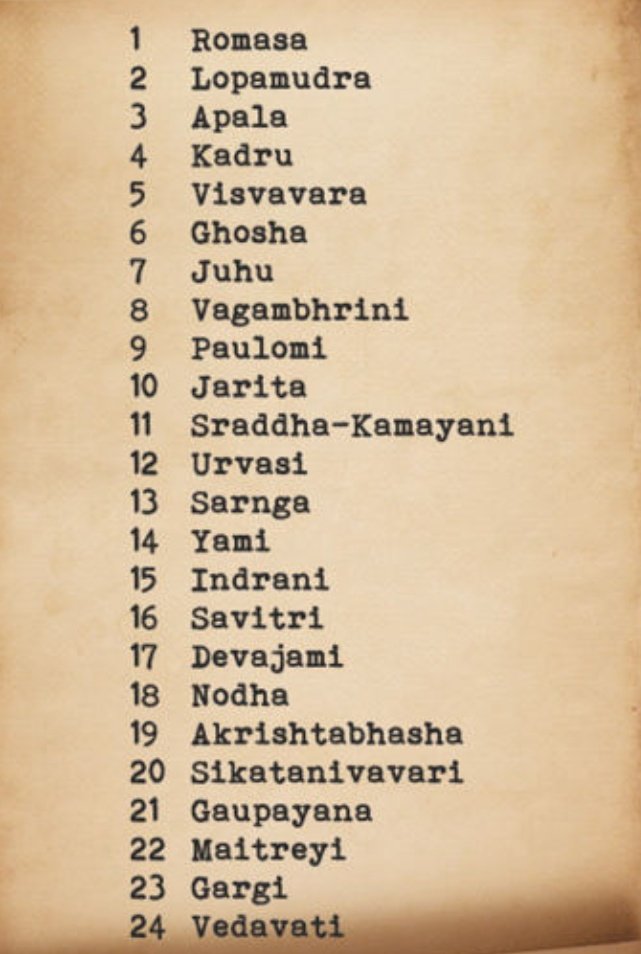(1/n) Indica was originally written in Latin and Greek.
The original book is now lost, but its fragments have survived in later Greek and Latin works.
The earliest of these works are those by Diodorus Siculus, Strabo (Geographica), Pliny, and Arrian (Indica)
The original book is now lost, but its fragments have survived in later Greek and Latin works.
The earliest of these works are those by Diodorus Siculus, Strabo (Geographica), Pliny, and Arrian (Indica)
https://twitter.com/HinduTrad/status/1311330880883884032
(2/n) The root of caste is the Latin castus, which means "chaste" or "pure, separated."
So the word used by Megasthenes was referring to pure or separated.
That's also the Word ‘Varna’ refers to.
The word was later used by Britishers, no one said that it was invented by British
So the word used by Megasthenes was referring to pure or separated.
That's also the Word ‘Varna’ refers to.
The word was later used by Britishers, no one said that it was invented by British

(3/n) The term “Caste System” was first used by the British colonial rulers in the 1871 census of India as one more of their ploy to divide and rule India.
(4/n) Here is what Indica by Arrian says:-
The Indians generally were divided into seven categories, the wise men (Brahmins), farmers, herdsmen, artisans, soldiers, over lookers, and government officials including army and navy officers.
The Indians generally were divided into seven categories, the wise men (Brahmins), farmers, herdsmen, artisans, soldiers, over lookers, and government officials including army and navy officers.

(5/n)
1. Brahmins – Neither masters, nor servants, exempted from all public duties, engaged by others to offer sacrifices and perform funerary rites, for which they received valuable gifts and privileges. At the beginning of the year, they make
1. Brahmins – Neither masters, nor servants, exempted from all public duties, engaged by others to offer sacrifices and perform funerary rites, for which they received valuable gifts and privileges. At the beginning of the year, they make
(6/n) prophecies. A philosopher whose prophecy fails receives strong criticism and has to observe silence for the rest of his life, but otherwise incurs no penalty.
(7/n)
2. Farmers/ Husbandsmen – Most numerous of all castes, exempted from fighting and other public duties. Regarded as public benefactors, and protected from damage during wars, even by enemy warriors. Pay a land tribute to the ruler, the official land owner (Property tax).
2. Farmers/ Husbandsmen – Most numerous of all castes, exempted from fighting and other public duties. Regarded as public benefactors, and protected from damage during wars, even by enemy warriors. Pay a land tribute to the ruler, the official land owner (Property tax).
(8/n) In addition, they remit 1/4th of their produce to the state treasury. Tax was capped at 25%, unlike today’s 35-80% by modern Govts.
(9/n)
3. Herders – Animal husbandry is treated as sacred. Hunt and trap crop-destroying birds and animals. Note, they hunted animals that were engaged in damage to human habitat. They were raising animals normally.
3. Herders – Animal husbandry is treated as sacred. Hunt and trap crop-destroying birds and animals. Note, they hunted animals that were engaged in damage to human habitat. They were raising animals normally.
(10/n)
4. Artisans and Traders (Vysya) – Create weapons as well as tools for farmers and others. People engaged in military service were exempted from paying taxes, and instead receive a maintenance from the state exchequer.
4. Artisans and Traders (Vysya) – Create weapons as well as tools for farmers and others. People engaged in military service were exempted from paying taxes, and instead receive a maintenance from the state exchequer.

(11/n) 5. Military (Kshatriya)
6. Overseers -They carried out administrative tasks.
7. Councilors and Judicial Assessors (Legislators)
6. Overseers -They carried out administrative tasks.
7. Councilors and Judicial Assessors (Legislators)

Conclusion- Caste was used as “profession” and not a “jati”. As profession continued in hereditary style, it was equated as “jati” by birth.
It was just a social stratification for division of labour (like a profession today).
The ‘Varna’ itself has the same meaning,
It was just a social stratification for division of labour (like a profession today).
The ‘Varna’ itself has the same meaning,
It's possible that the word used for Varna was used in the context of Latin meaning, but people tend to confuse it with Portugese meaning, for understanding it better please refer to (2/n)
• • •
Missing some Tweet in this thread? You can try to
force a refresh










